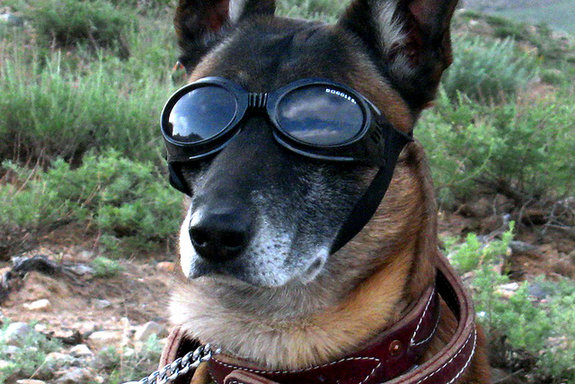U.S. Military Wants to Recruit the Smartest Dogs by Scanning Their Brains
The theory is that, by scanning a dog’s level of neural response to various stimuli, including handler cues, the researchers will be able to identify the dogs that will be the quickest learners and therefore the easiest to train

Photo: The U.S. Army
Dogs have been long been an important part of military operations—from bomb-sniffing to supply-delivery—even long before Rin Tin Tin. But training military working dogs is an expensive and time-consuming process. And anyone who’s spent any time trying to get a dog to even follow the “sit” command knows that some dogs are sharper than others.
Now, Wired’s Danger Room blog reports on a plan by DARPA to pre-select the smartest recruits using newly available brain-scanning methods:
…the project — adorably called FIDOS, for “Functional Imaging to Develop Outstanding Service-Dogs” — touts the idea of using magnetic image resonators (or MRIs) to “optimize the selection of ideal service dogs” by scanning their brains to find the smartest candidates. “Real-time neural feedback” will optimize canine training. That adds up to military pooches trained better, faster and — in theory — at a lower cost than current training methods of $20,000, using the old-fashioned methods of discipline-and-reward.
The theory is that, by scanning a dog’s level of neural response to various stimuli, including handler cues, the researchers will be able to identify the dogs that will be the quickest learners and therefore the easiest to train.
Scanning dogs’ brains may also help trainers identify different types of intelligence, so as to more accurately match certain dogs to tasks they’d be best at. For instance, more “brain hyper-social dogs”—those who are best at sensing and responding to the emotional cues of their handlers—would be best used as therapy dogs for soldiers in rehabilitation.
The research looks promising; although, as PopSci’s Clay Dillow points out, challenges remain:
Before you can train to be a canine psychology assistant or to rope out of helicopters with the SEALs, you have to train it to lay still in an fMRI machine.
Good point. On the other hand, though, if little Fido can’t do so much as sit still for a quick head exam, shouldn’t he be automatically disqualified from the more delicate task of detecting a bomb?
More on Smithsonian.com:
In New Zealand, Dogs Are Being Taught How To Drive Cars
How Dogs are Replacing Drugs in the Treatment of PTSD
The Dogs of War